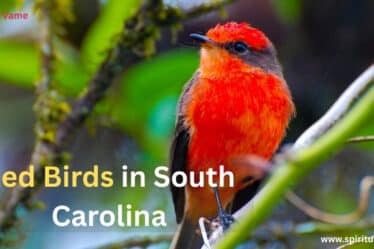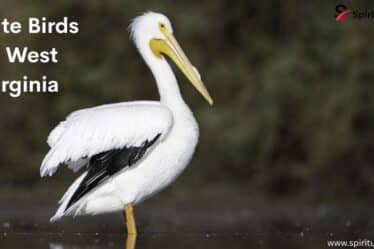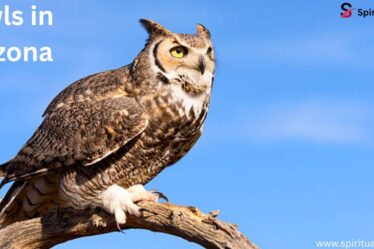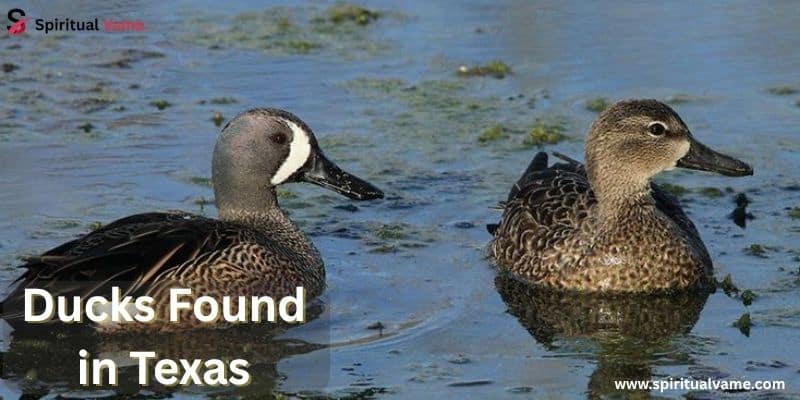
Texas is one of the best places to see ducks in the wild. With its lakes, wetlands, and rivers, the state is home to many species. You’ll find ducks in Texas all year, but even more come in fall and winter. The state sits in the Central Flyway, a major path for bird migration. That’s why so many ducks stop here to rest, feed, or nest.
This guide shows you the most common ducks found in Texas. Whether you’re a birdwatcher or just curious, there’s something for everyone. From colorful teals to rare divers, each duck has a story. Keep reading to learn about the amazing ducks found in Texas.
23 Ducks in Texas
Texas isn’t just big in size—it’s also huge in biodiversity. The ducks that visit or reside here vary in shape, color, size, and behavior. Some are tiny dabblers like the Blue-winged Teal, while others, like the Canvasback, are powerful divers. Each species has its own migratory patterns, breeding habits, and quirks. Some are bold and easy to spot, while others are shy and blend perfectly with their surroundings using mottled camouflage. This section will walk you through each species—how to identify them, where they live, and why they matter in the Texas ecosystem.
These ducks thrive in various habitats, from tree-lined ponds to open coastal waters. Many are listed as species of Least Concern, but that doesn’t mean they don’t need protection. Wetland conservation and habitat preservation are critical for ensuring their survival, especially as some areas face threats like development and seasonal dryness. Let’s meet the ducks one by one.
1. Mallard
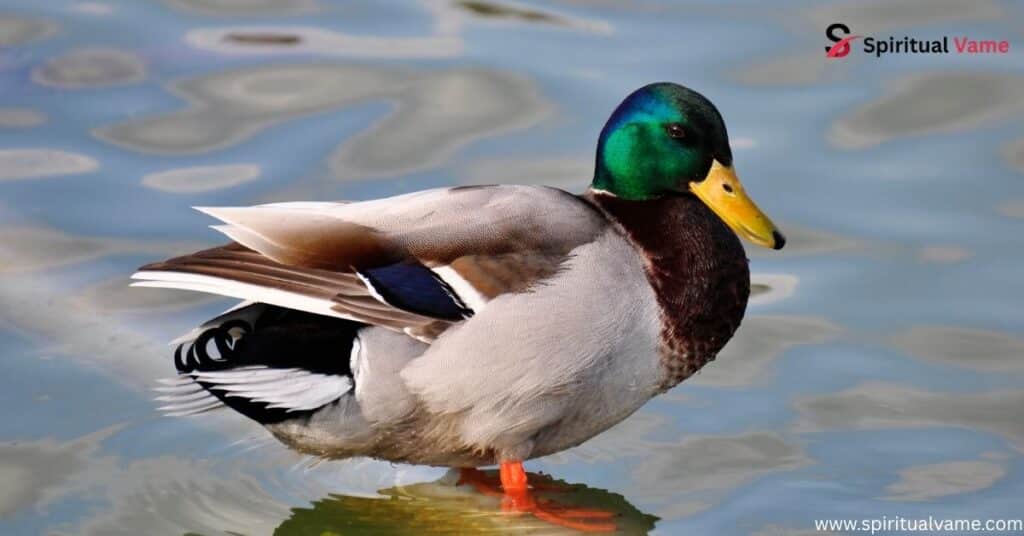
The Mallard (Anas platyrhynchos) is one of the most recognizable ducks found in Texas. Males have that classic green head, a bright yellow bill, and a white neck ring, while females are brown with dark eye stripes for camouflage. They usually weigh between 700–1600g and live around 5–10 years. These ducks are social and can often be found in city parks, shallow ponds, and wetlands across Texas. They eat seeds, aquatic plants, and small invertebrates.
Mallards are also known for their adaptability. Whether it’s a quiet countryside pond or a busy city reservoir, they make themselves at home. They even show different vocal patterns between urban and rural areas. Researchers have noted changes in maternal calls, soft hissing sounds, and even faint whistling wings as part of their communication. This species has seen a strong rebound thanks to focused wetland restoration efforts.
2. Blue-winged Teal
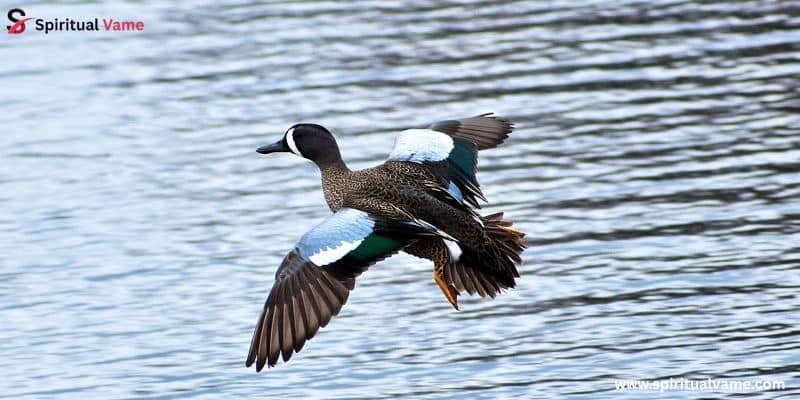
The Blue-winged Teal (Spatula discors) is a small, fast-flying duck that often migrates early, sometimes leaving by mid-fall. They’re easy to identify by the bright blue wing patches and a white crescent on the face of the males. These ducks live about 5–10 years, and their average size is 40–47 cm in length. Though common, they are discreet and prefer to nest on the ground near shallow wetlands or prairie potholes.
Their diet includes seeds, aquatic plants, and small invertebrates, making them essential to the balance of wetland ecosystems. Because they prefer quiet, undisturbed places, they’re often a sign of healthy habitat. Like many migratory ducks in Texas, they rely heavily on habitat preservation to keep their numbers strong each season.
3. Gadwall
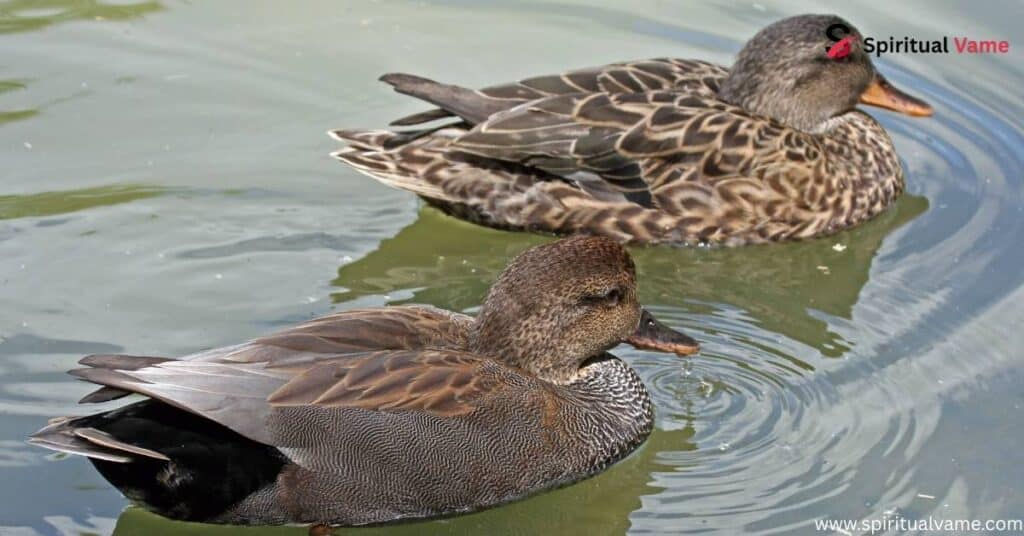
The Gadwall (Mareca strepera) may not be the flashiest duck, but its beauty lies in the details. It has a sleek grey pattern, a black bill, and a calm personality that suits its preference for quiet marsh vegetation. Gadwalls are often seen in wetlands, reservoirs, and even urban water bodies. They weigh between 800–1350g and live around 5–10 years.
This duck is known for its secretive habits, often sneaking food from other ducks. It feeds mostly on aquatic vegetation, and it plays a vital role in wetland restoration by helping spread plant seeds. The species is widespread across Europe, North America, and winters as far south as Central America. They typically form small flocks and engage in simple courtship displays with sounds like “mep” and soft grunt-whistles.
4. Bufflehead
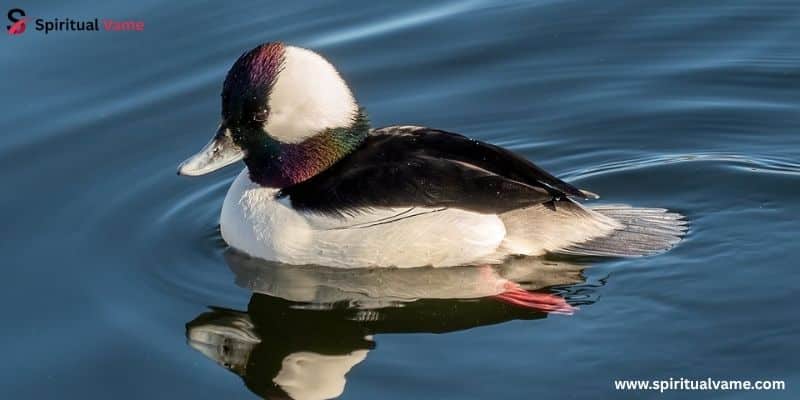
The Bufflehead (Bucephala albeola) is a tiny diver, easily recognized by its bold black-white pattern and round, oversized head. Males show off a white patch on their heads, while females wear a white cheek spot. These ducks weigh between 270–550g, grow up to 40 cm, and can live up to 15 years. They prefer tree-lined ponds, quiet bays, and areas with cavity nests, often using old woodpecker holes.
Their diet includes aquatic invertebrates and some plant material, and they’re excellent swimmers. The Bufflehead population remains stable, though habitat loss in nesting areas can pose risks. Their presence in Texas adds to the seasonal diversity of migratory ducks.
5. Cinnamon Teal
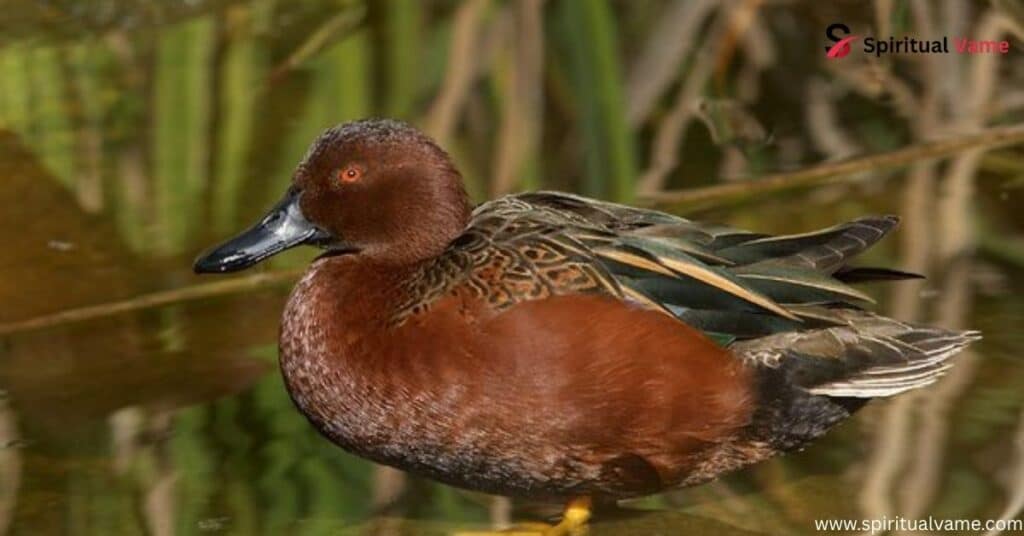
The Cinnamon Teal (Spatula cyanoptera) is exactly what it sounds like—bright reddish-brown males with red eyes and mottled bodies. These birds are rare in Texas but a treat to see. Measuring around 38–41 cm and weighing about 340–425g, they live around 7–10 years. They often nest on the ground, close to wetlands and shallow lakes.
Their diet consists of aquatic plants and invertebrates, and they contribute to the ecological health of their habitat. Because they are less common, spotting one in Texas is like finding a needle in a haystack. Still, they play an important role in wetland conservation efforts as indicator species.
6. American Wigeon
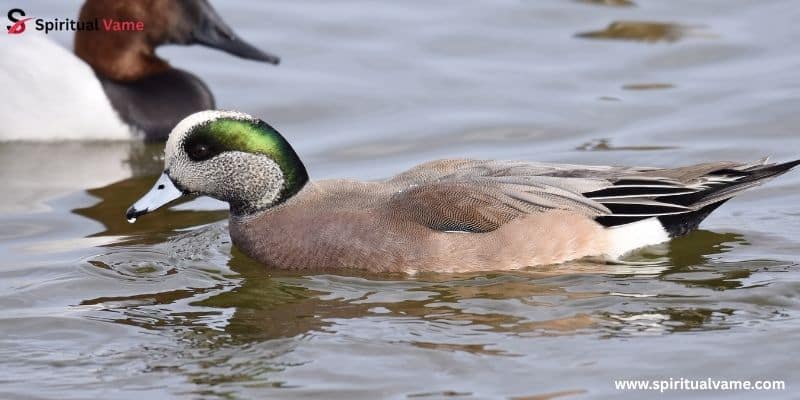
The American Wigeon (Mareca americana) stands out with a bold white forehead, a shiny green stripe, and a brown body. They live about 12–15 years, grow up to 59 cm, and are known for their strange food-stealing behavior—they’ll often steal plants from diving ducks like Canvasbacks.
Their nesting style includes ground nests in grassy or wetland areas, and they prefer feeding in shallow grasslands. This migratory species is commonly found in Texas during the winter months and plays a large role in wetland management thanks to its grazing habits.
7. Green-winged Teal
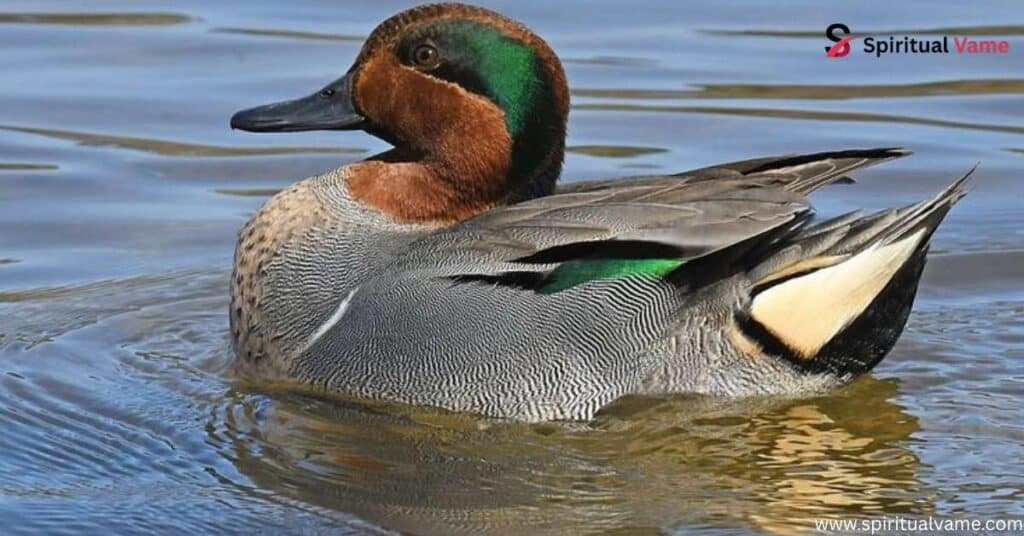
The Green-winged Teal (Anas crecca) is among the smallest waterfowl species found in Texas, yet it’s packed with personality. Males have a rich chestnut head with a bright green eye patch, while females are more muted with mottled brown plumage for camouflage. They measure around 33–38 cm, weigh 150–400g, and live for about 5–10 years. These ducks are swift and agile flyers, often spotted in large flocks in shallow wetlands, flooded fields, and timber-lined ponds.
Known as opportunistic feeders, Green-winged Teals consume seeds, insects, and small aquatic life. Their nesting secrecy helps protect their young, and their ability to thrive in diverse environments shows their adaptability. This makes them a resilient part of Texas’ avian population, especially during the winter migration season.
8. Harlequin Duck
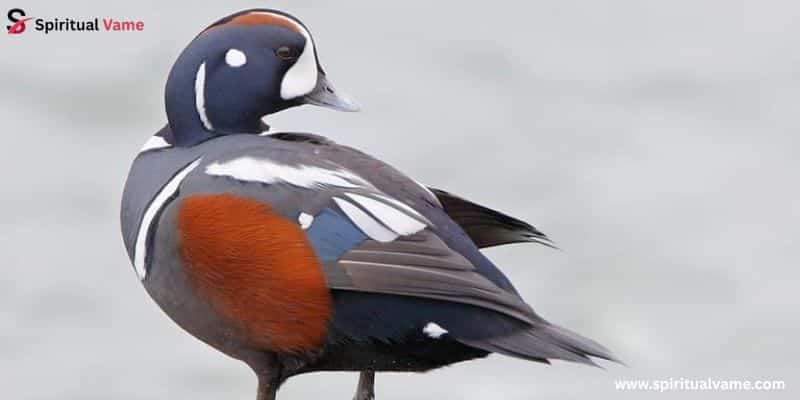
The Harlequin Duck (Histrionicus histrionicus) is one of the most visually stunning but rarely seen ducks in Texas. Males wear a bold blue-black-white pattern with chestnut highlights, making them easy to identify—if you’re lucky enough to spot one. They are small ducks, about 38–46 cm long and weighing 550–650g, with lifespans up to 12 years. Their preferred habitat includes rocky streams, fast-moving rivers, and sometimes turbulent coastal waters.
They build moss-lined nests and feed on insects, fish, and crustaceans. While uncommon in Texas, occasional sightings during migration add excitement to the birding community. This species is sensitive to oil spills and pollution, making it a focus in conversations around water quality and conservation.
9. Black-bellied Whistling-Duck
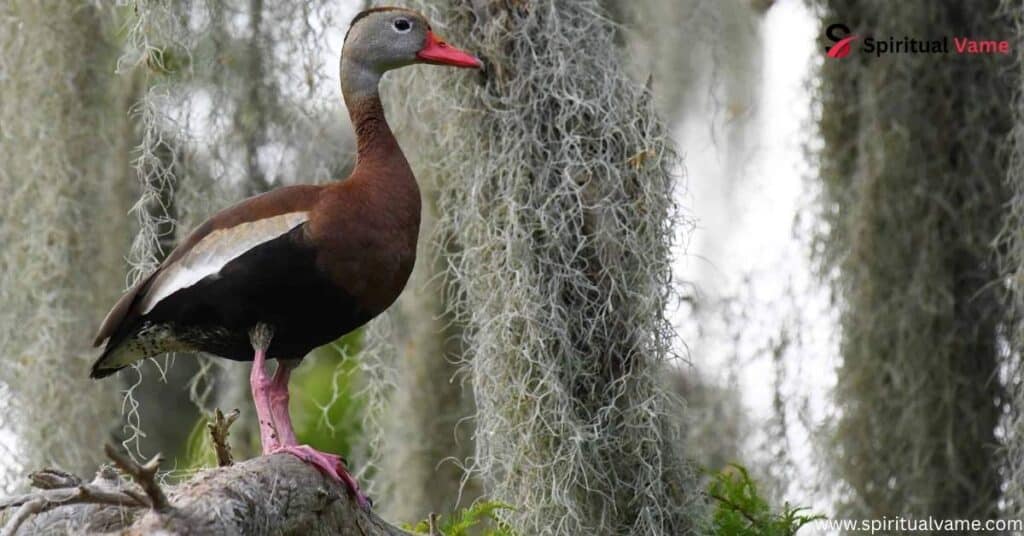
The Black-bellied Whistling-Duck stands out with its goose-like posture, long legs, and pink bill. This species nests in tree cavities and is often seen standing upright near water bodies. It thrives in the Gulf Coast wetlands, rice fields, and even suburban ponds. Though it doesn’t migrate far, it plays a key role in the region’s bird diversity.
This duck’s unique whistling call adds to its charm, and its diet includes aquatic vegetation and seeds. Because of its preference for shallow wetlands, the species is a good indicator of habitat quality. Unlike many ducks, both parents often help raise the brood.
10. Ruddy Duck
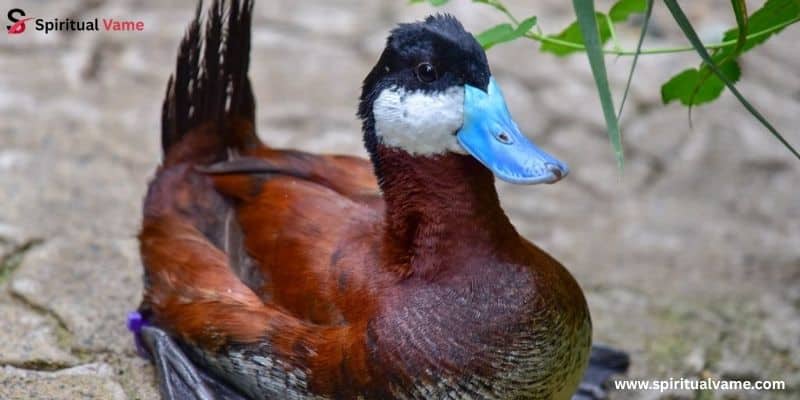
Small but mighty, the Ruddy Duck is easily recognized by its bright sky-blue bill in breeding season and stiff tail often cocked upright. Males boast cinnamon-colored bodies and bold black-and-white faces. These diving ducks prefer open reservoirs and lakes, where they feed on invertebrates and plant material.
Though small, their feisty behavior and energetic swimming make them fun to watch. They’re typically silent, but during courtship, males create bubbling displays by beating their chest with their bill. Ruddy Ducks are important members of Texas’ wetland ecosystems, playing their part in insect control and seed dispersion.
11. Fulvous Whistling Duck
The Fulvous Whistling Duck is another long-legged species with a warm cinnamon-colored body and a pale stripe down the side. These ducks favor rice fields, flooded areas, and reedy wetlands. Their high-pitched whistling sounds make them easy to recognize even when hidden in thick cover.
They feed on aquatic plants, seeds, and grasses, often foraging in shallow water or on land. Like their black-bellied cousins, Fulvous Whistling Ducks sometimes nest in trees but also use ground nests. Though not overly common in Texas, they’re regularly seen in the southeastern part of the state.
12. Northern Shoveler
The Northern Shoveler (Anas clypeata) has an unmistakable oversized spoon-like bill. Males shine with green heads and chestnut sides, while females sport a speckled brown body for blending into tall grass nests. This duck uses its wide bill for filter feeding, sifting through mud and water for small organisms.
These dabblers are frequent visitors to wetland areas throughout Texas, and their population remains stable. Their role in wetland preservation comes through their feeding behavior, which stirs sediment and helps with water aeration. They’re a familiar sight during the winter months and into early spring.
13. Ring-necked Duck
Despite the name, the Ring-necked Duck rarely shows its neck ring clearly. Instead, look for its glossy black back and sharp white stripe on the bill. These diving ducks are common in Texas during migration and winter. They prefer freshwater lakes, slow-moving rivers, and ponds.
They feed on aquatic vegetation, snails, and insects, often diving to reach their food. Males are bold in appearance, while females are more subtly patterned. Their strong, direct flight style makes them easy to identify in the air. They play a steady role in the Central Flyway ecosystem.
14. Common Merganser
The Common Merganser is a sleek, large duck with a narrow, serrated bill ideal for catching fish. Males show off a dark green head and white body, while females have rusty heads and gray backs. These ducks prefer clear rivers, deep lakes, and reservoirs.
They nest in tree cavities or nest boxes and are known to dive for prey. Because of their diet, they need clean water with healthy fish populations. Their presence in Texas adds to the seasonal diversity of winter waterfowl.
15. Long-tailed Duck
Rare and beautiful, the Long-tailed Duck is a cold-water species that occasionally winters along the Texas coast. Males have striking black-and-white plumage and long tail feathers, while females are plainer but still distinctive. They dive deeply for invertebrates and small fish.
They prefer coastal waters, bays, and deep lakes. Though only spotted occasionally in Texas, they add to the list of remarkable migratory birds making seasonal stops in the state. Their appearance often excites seasoned birders.
16. Northern Pintail
The Northern Pintail is one of the most graceful ducks found in Texas. Males have sleek pointed tails, a white neck stripe, and chocolate-brown heads. These birds favor flooded fields, wetlands, and shallow lakes.
Pintails are early migrants and among the first to return north in spring. They feed on grains, seeds, and aquatic insects. With their long necks and elegant flight, they are a favorite among birdwatchers and an essential part of the region’s migratory patterns.
17. Canvasback
The Canvasback is a large diving duck with a long, sloping head and a bold red eye. Males have a rich chestnut head and white back, while females are pale brown. They dive for tubers, roots, and aquatic plants in prairie lakes and reservoirs.
Often found in deeper water than most dabblers, Canvasbacks require stable habitats to breed and winter successfully. Their numbers are stable but rely on conservation efforts, especially in breeding grounds across the northern prairies.
18. Wood Duck
The Wood Duck is possibly the most colorful duck in Texas. Males wear a vibrant mix of iridescent green, red, white, and tan, while females have a white eye ring and elegant brown feathers. They nest in tree cavities near water and can be found in wooded wetlands, creeks, and swamps.
Wood Ducks are among the few ducks that perch in trees. Their population has benefited greatly from nest box programs and wetland restoration. With proper breeding habitat, these ducks thrive across the state.
19. Hooded Merganser
The Hooded Merganser has a dramatic fan-shaped crest that it can raise or lower. Males have black-and-white crests with rich brown flanks, while females have cinnamon-colored heads. They dive for fish, insects, and crustaceans in forested lakes and rivers.
They use tree cavities for nesting and are excellent indicators of clean, healthy water systems. These ducks are shy and move quickly on the water’s surface, often disappearing beneath it in a flash.
20. Red-breasted Merganser
Fast and slender, the Red-breasted Merganser is a speedy flyer known for its shaggy crest and long, red bill. It prefers coastal waters during migration and is often seen along the Gulf Coast of Texas. Males have a greenish head, red eye, and white neck band.
These ducks are highly effective divers and primarily eat fish, making them reliant on clean, productive waters. Their presence reflects a rich coastal ecosystem.
21. Redhead
The Redhead duck has a vibrant red head, black chest, and gray body. These birds often gather in large flocks with other diving ducks on lakes, marshes, and reservoirs across Texas.
Redheads build floating nests among reeds and prefer freshwater marshes with dense vegetation. They are strong swimmers and divers, feeding on aquatic plants and snails. Their population remains steady, but habitat protection is key.
22. Common Goldeneye
With golden eyes and striking white cheek patches, the Common Goldeneye is easy to spot. It makes a unique whistling wingbeat during flight and dives for small fish and insects in deep lakes and rivers.
These ducks are cavity nesters and depend on old trees or nest boxes. Though they’re more common in the northern U.S., they regularly winter in Texas, adding to the seasonal richness of the state’s avian population.
23. Mottled Duck
The Mottled Duck is a year-round resident in Texas and looks like a darker, plainer Mallard. They live mostly in coastal marshes and are critical to the state’s native waterfowl diversity. These birds are solid brown with a lighter head and orange bill in females.
Unlike many other ducks, Mottled Ducks don’t migrate far. They nest in grasses or under brush and feed on invertebrates, seeds, and aquatic plants. They’re a key species in wetland management and deserve close conservation attention due to their limited range.
Where to find Ducks in Texas
Texas is full of duck-watching hotspots, and knowing where to go makes all the difference. The East Texas Pineywoods, with its swamps and quiet backwaters, is perfect for spotting species like Wood Ducks and Mallards. The Caddo Lake area, with its cypress forests and mossy bayous, offers one of the richest birding experiences in the South. To the west, the Panhandle playas and Muleshoe Wildlife Refuge host massive winter flocks, especially during peak Fall and Winter migration.
Many species follow precise migratory timing, so the best viewing times are typically early morning or just before sunset. Seasonal stopovers bring large numbers of birds to specific areas, while some, like the Mottled Duck, are easy to find year-round. Whether you’re in the marshes of the coast or near a quiet inland reservoir, Texas offers endless opportunities to see ducks in their natural habitat.
Conclusion
With its wide range of habitats, Texas is home to an incredible variety of ducks. From tiny teals to showy mergansers, the state’s birdlife reflects both the richness and fragility of its natural spaces. Spotting any of these 23 ducks in Texas is a rewarding experience, whether you’re new to birding or a seasoned watcher. Protecting wetlands, supporting habitat preservation, and appreciating the beauty of each duck helps ensure that future generations will also enjoy the amazing ducks found in Texas.

